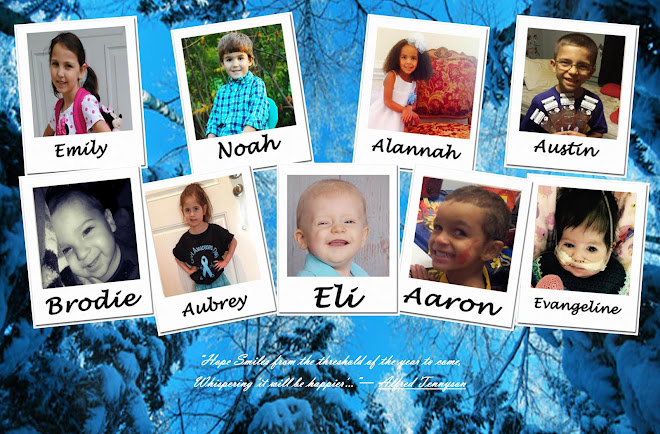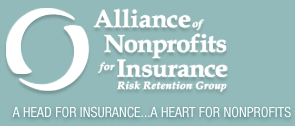Breath of Hope, Inc. Helps Patients, Families and Friends Stay Connected with New CarePages.com Services
CarePages.com facilitates communications and emotional support that studies show contribute to better patient experiences and outcomes
Charlottesville, Virginia -- Breath of Hope, Inc. now offers patients, their families and friends free access to CarePages.com, healthcare’s largest social network to provide the emotional support needed for healing and well-being.
CarePages.com enables those involved in a health event to create private, Web sites for sharing health updates, photos and supportive messages. CarePages.com also has resources to help people cope with the emotional challenges of a health event, including inspiring stories, tools to meet others in similar situations, and practical tips and advice on “what to do” and “what to say” during difficult and stressful situations.
With this new service, Breath of Hope, Inc. is in the forefront of a growing trend among public charities that support families and friends to improve the overall patient experience by recognizing and meeting their emotional needs. A recent survey of nearly 900 caregivers and visitors to patient CarePages found that more than 92% said they would like to see healthcare providers be more proactive in providing emotional support.
In addition, several clinical studies have concluded that emotional support can have a positive effect on the healing process. For example, an article in the Joint Commission Journal on Quality and Safety (December 2003), reported that emotional well-being has been shown to be predictive of survival and functional independence among older patients.
“CarePages helps Breath of Hope, Inc. move forward on one of our key priorities—increasing patient well-being and overall patient and family satisfaction,” said Elizabeth Doyle-Propst, CEO “It’s very easy to use, since we’ve integrated CarePages.com with our own Web site http://www.breathofhopeinc.com/ and other services.”
“Breath of Hope, Inc. recognizes that communication and personal interactions can transform health events into more positive experiences for all participants,” said Eric Langshur, CEO, CarePages, Inc. “CarePages has helped millions of patients connect on a deeper level with their families, friends and other caregivers, and we are proud to welcome Breath of Hope, Inc. into the CarePages community.”
In addition to giving patients and families emotional support, CarePages.com makes it easy for patients and families to recognize Breath of Hope, Inc members who have provided superior levels of care. The service also gives them the opportunity to support Breath of Hope, Inc.
CarePages.com is secure and compliant with all HIPAA requirements. It ensures that patients, families and healthcare providers are protected online through strict privacy policies, password-protection and visitor management tools for CarePage Managers.
# # #
About CarePages, Inc.
CarePages.com is the first site dedicated solely to helping people cope with the emotional difficulties caused by a health event. Millions of CarePages.com members have used its free, patient-centric Web pages to communicate and connect with each other, plus its unique resources to guide them through the experience. In addition, customized CarePages are offered by nearly 700 U.S. and Canadian healthcare facilities. CarePages, Inc. is part of Revolution Health Group LLC, whose goal is to help consumers make informed choices and put them in control of their health decisions through the cornerstone of its efforts – RevolutionHealth.com. Together, these services address both the emotional and informational health care needs of its members. For more information, please visit http://www.carepages.com/.
CarePages.com facilitates communications and emotional support that studies show contribute to better patient experiences and outcomes
Charlottesville, Virginia -- Breath of Hope, Inc. now offers patients, their families and friends free access to CarePages.com, healthcare’s largest social network to provide the emotional support needed for healing and well-being.
CarePages.com enables those involved in a health event to create private, Web sites for sharing health updates, photos and supportive messages. CarePages.com also has resources to help people cope with the emotional challenges of a health event, including inspiring stories, tools to meet others in similar situations, and practical tips and advice on “what to do” and “what to say” during difficult and stressful situations.
With this new service, Breath of Hope, Inc. is in the forefront of a growing trend among public charities that support families and friends to improve the overall patient experience by recognizing and meeting their emotional needs. A recent survey of nearly 900 caregivers and visitors to patient CarePages found that more than 92% said they would like to see healthcare providers be more proactive in providing emotional support.
In addition, several clinical studies have concluded that emotional support can have a positive effect on the healing process. For example, an article in the Joint Commission Journal on Quality and Safety (December 2003), reported that emotional well-being has been shown to be predictive of survival and functional independence among older patients.
“CarePages helps Breath of Hope, Inc. move forward on one of our key priorities—increasing patient well-being and overall patient and family satisfaction,” said Elizabeth Doyle-Propst, CEO “It’s very easy to use, since we’ve integrated CarePages.com with our own Web site http://www.breathofhopeinc.com/ and other services.”
“Breath of Hope, Inc. recognizes that communication and personal interactions can transform health events into more positive experiences for all participants,” said Eric Langshur, CEO, CarePages, Inc. “CarePages has helped millions of patients connect on a deeper level with their families, friends and other caregivers, and we are proud to welcome Breath of Hope, Inc. into the CarePages community.”
In addition to giving patients and families emotional support, CarePages.com makes it easy for patients and families to recognize Breath of Hope, Inc members who have provided superior levels of care. The service also gives them the opportunity to support Breath of Hope, Inc.
CarePages.com is secure and compliant with all HIPAA requirements. It ensures that patients, families and healthcare providers are protected online through strict privacy policies, password-protection and visitor management tools for CarePage Managers.
# # #
About CarePages, Inc.
CarePages.com is the first site dedicated solely to helping people cope with the emotional difficulties caused by a health event. Millions of CarePages.com members have used its free, patient-centric Web pages to communicate and connect with each other, plus its unique resources to guide them through the experience. In addition, customized CarePages are offered by nearly 700 U.S. and Canadian healthcare facilities. CarePages, Inc. is part of Revolution Health Group LLC, whose goal is to help consumers make informed choices and put them in control of their health decisions through the cornerstone of its efforts – RevolutionHealth.com. Together, these services address both the emotional and informational health care needs of its members. For more information, please visit http://www.carepages.com/.






